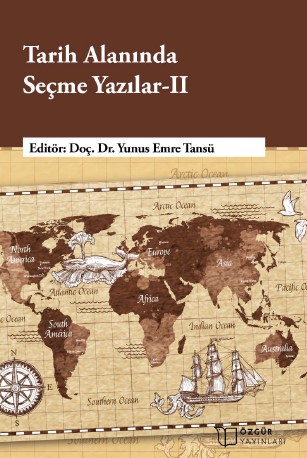Orta Farsça (Pehlevîce)
Middle Persian (Pahlawi)
Author(s): Ahmet Altungök
Subject(s): Cultural history, Social history, Ancient World, Cultural Anthropology / Ethnology
Published by: Özgür Yayın Dağıtım Ltd. Şti.
Keywords: Turks in Late Antiquity; Pahlavi;
Summary/Abstract: Research on the history of Late Antiquity Near Asia in our country remains very insufficient. However, the oldest records mentioning the Turks are Late Antique Iranian sources. It has become essential to know Pahlavi for research on Turkish history. Turkish historiography is contented with the works of western orientalists on this subject. In these studies, important information about Turkish history is omitted. Therefore, learning Pahlavi has become a necessity for the study of ancient Turkish history. Therefore, in this section, it is aimed to provide comprehensive information about the writing types of Pahlavi that have survived to the present day. It is seen that seven different scripts were used in the historical texts that have survived from the Sasanian period to the present day. Two of these scripts, which are basically based on the Ārām alphabet, are very close to each other in terms of letter characters. The other four scripts are quite distant from the letter characters of the Ārām script. Parthian script, one of these scripts, was also used during the Sasanian period. The Sasanian alphabet is similar to the one created during the Parthian period based on the Ārām alphabet. Except for the Mani scripts written in Syriac script, all texts were written in different derivatives of this alphabet. These scripts were called Parthian Pahlavi (Chaldeo Pahlavi), Kitābe Pahlavi (Inscriptional Pahlavi), Kitābī Pahlavi (Modern Pahlavi/Book Pahlavi), Mezmūrs Pahlavi (Psalter Pahlavi), Pazānd Pahlavi and Huzvarish (Zürvarish) according to their usage. In the post-Islamic period, ibn al-Nadīm, who gave information about the Iranian language and script through ibn al-Muqaffa, narrated that many different scripts were used during the Sasanian period. It is understood that some of these scripts mentioned by post-Islamic sources have not survived to the present day.
Book: Tarih Alanında Seçme Yazılar- II
- Page Range: 57-79
- Page Count: 23
- Publication Year: 2023
- Language: Turkish
- Content File-PDF

